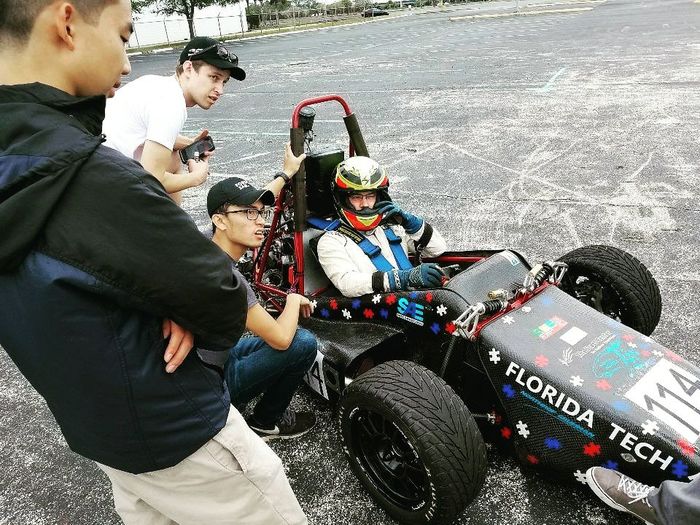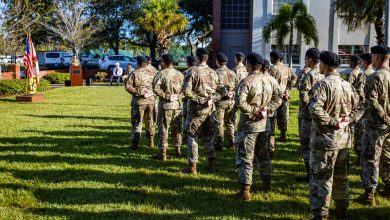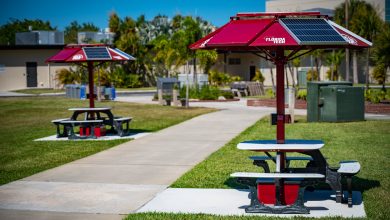Florida Tech’s Formula SAE Team Races Towards International Competition
Austin Taft, a junior studying aerospace engineering at Florida Tech, lights up when he talks about Formula SAE—a team of students who design, manufacture, test and race a formula style car in The Society of Automotive Engineers (SAE)’s collegiate series.
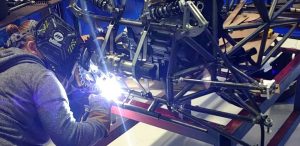
These Formula SAE competitions are held in various locations around the world, but Florida Tech’s team competes in Michigan each May—the oldest running and largest competition put on globally for FSAE.
Designing and manufacturing the vehicles for these competitions takes hundreds, if not thousands, of man-hours.
Florida Tech’s team is made up of students from different majors and grade levels, but is led by a senior design team that presents their vehicle at the annual Northrop Grumman Senior Design Showcase in April.
“The seniors that are on the project are the main workforce. They are assigned to a single subteam and do the heavier work,” said Taft, who will drive the car during this year’s Formula SAE completion.
Taft is also lined up to be the chief engineer for next year’s senior design team.
“The underclassmen, me right now, pick a subteam to support and typically are there to learn from the seniors and leads so they have a better start when they become seniors on the project,” he said.

This year’s senior design team, led by Hunter Lee, is broken into five subteams: Suspension, Chassis, Powertrain, Aerodynamics and Business.
“Each subteam has a lead so the team lead and chief engineer can focus on managing the team and keeping things running smoothly,” Taft said.
Suspension deals with the entire wheel assembly—tires, brakes, suspension arms that connect the wheels to the chassis, etc.
Chassis is what connects all the components of the car.
“Think of the chassis like a complicated way to keep the wheels together, the driver secure and the engine secure,” Taft said.
Powertrain includes everything related to delivering power to the ground to make the car move, minus the wheels.
“That means the engine, drive chain (like a bicycle), differential (a magic cylinder that makes sure wheels can grip the ground properly) and axles (which connect the differential to the wheels),” Taft explained. “It also includes the exhaust.”

Aerodynamics has to with how the air flows over the car.
“It includes the front and rear wings, side pods and sometimes a tray under the car called a diffuser that makes every other component work even better,” Taft said.
Finally, the business subteam sets up fundraising events and organizes sponsorship packages. This subteam also puts together the business model for the car.
“You can’t forget that designing for a customer involves a whole lost of cost analysis,” Taft said, “so the business subteam sets a tentative budget, helps schedule deadlines and makes sure the car design will satisfy the needs of the customer.”
Taft said Florida Tech’s FSAE capstone team is meant to mimic a design team contacted by a fictional manufacturing company that wants to produce a car for the average weekend autocross driver.
“This manufacturing company ‘reaches out’ to all participating universities, which is why it’s a competition,” he said.
There are extensive rules for the vehicle to adhere in order to ensure safety and to put universities with differing budgets on a more equal playing field.
“The main goal of the project is to give students the opportunity to take a project from concept to research, design, manufacturing and testing until they reach a final product,” Taft said.
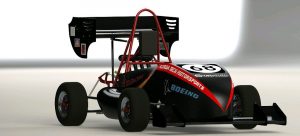
According to Taft, the team’s overall goal this year is to manufacture a vehicle that weighs 480 pounds and places in the top 35 percent of the competition.
“So far, all goals are looking pretty achievable,” he said.
Taft said last year’s competition car wasn’t very well optimized, so the team is working to improve the tuning capabilities of the suspension—i.e. making it so a handful of suspension parameters can be adjusted in small increments to increase performance as needed.
“Another improvement we made is that we switched to smaller wheels,” he said. “The idea is to decrease weight and improve vehicle acceleration.”
According to Taft, this was a huge change because many other parts of the car were affected.
“And lastly, but most importantly,” Taft said, “we’re aiming to increase the amount of testing time we get in the car. Testing is so crucial to having a car that performs well—and last year we got next to none of it.”

He said the team hopes to get 10 days of testing before the competition but is realistically expecting to get around seven because of delays.
“It’s the coolest thing ever to sit in a student-built project wearing a slick racing suit and helmet,” Taft said.
“You put the pedal to the floor as you come out of a turn, the acceleration smashes you back in your seat and you just let the smile rip from ear to ear,” he said. “I actually laughed out loud the first time.”
For the most up to date news on the FSAE team at Florida Tech, visit https://www.facebook.com/FloridaTechMotorsports/.

